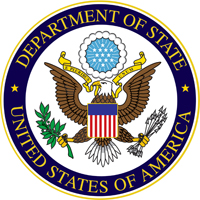Тема создается во избежание повторения одних и тех же вопросов и для помощи желающим узнать как можно более подробную информацию о путях въезда в США.
Ниже будет выкладываться официальная информация о всех типах неиммиграционных виз в США.
B-1 _______Athletes, amateur & professional (compete for prize money only)
J _________Au pairs (exchange visitor)
E-3 _______Australian professional specialty
BCC _______Border Crossing Card: Mexico
B-1 _______Business visitors
A _________Diplomats and foreign government officials
B-1 _______Domestic employees or nanny -must be accompanying a foreign national employer
G1-G5,
NATO _____Employees of a designated international organization, and NATO
J__________Exchange visitors
A-2,
NATO1-6___Foreign military personnel stationed in the U.S.
O__________Foreign nationals with extraordinary ability in Sciences, Arts, Education, Business or Athletics
H-1B1______Free Trade Agreement (FTA) Professionals: Chile, Singapore
Q__________International cultural exchange visitors
L___________Intra-company transferees
B-2_________Medical treatment, visitors for
I___________Media, journalists
TN/TD______NAFTA professional workers: Mexico, Canada
H1-C_______Nurses coming to health professional shortage areas
P__________Performing athletes, artists, entertainers
J, H-1B_____Physician
J__________Professor, scholar, teacher (exchange visitor)
R__________Religious workers
H-1B_______Specialty occupations in fields requiring highly specialized knowledge
F, M_______Students: academic, vocational
H-2A_______Temporary agricultural workers
H-2B_______Temporary workers performing other services or labor of a temporary or seasonal nature
B2_________Tourism, vacation, pleasure visitors
H-3________Training in a program not primarily for employment
E__________Treaty traders/treaty investors
C__________Transiting the United States
K-1________Nonimmigrant Visa for a Fiance(e)
K-3________Nonimmigrant Visa for a Spouse
K-4________Nonimmigrant Visa for the spouse's children
Ниже будет выкладываться официальная информация о всех типах неиммиграционных виз в США.
КЛАССИФИКАЦИЯ НЕИММИГРАЦИОННЫХ ВИЗ В США
B-1 _______Athletes, amateur & professional (compete for prize money only)
J _________Au pairs (exchange visitor)
E-3 _______Australian professional specialty
BCC _______Border Crossing Card: Mexico
B-1 _______Business visitors
A _________Diplomats and foreign government officials
B-1 _______Domestic employees or nanny -must be accompanying a foreign national employer
G1-G5,
NATO _____Employees of a designated international organization, and NATO
J__________Exchange visitors
A-2,
NATO1-6___Foreign military personnel stationed in the U.S.
O__________Foreign nationals with extraordinary ability in Sciences, Arts, Education, Business or Athletics
H-1B1______Free Trade Agreement (FTA) Professionals: Chile, Singapore
Q__________International cultural exchange visitors
L___________Intra-company transferees
B-2_________Medical treatment, visitors for
I___________Media, journalists
TN/TD______NAFTA professional workers: Mexico, Canada
H1-C_______Nurses coming to health professional shortage areas
P__________Performing athletes, artists, entertainers
J, H-1B_____Physician
J__________Professor, scholar, teacher (exchange visitor)
R__________Religious workers
H-1B_______Specialty occupations in fields requiring highly specialized knowledge
F, M_______Students: academic, vocational
H-2A_______Temporary agricultural workers
H-2B_______Temporary workers performing other services or labor of a temporary or seasonal nature
B2_________Tourism, vacation, pleasure visitors
H-3________Training in a program not primarily for employment
E__________Treaty traders/treaty investors
C__________Transiting the United States
K-1________Nonimmigrant Visa for a Fiance(e)
K-3________Nonimmigrant Visa for a Spouse
K-4________Nonimmigrant Visa for the spouse's children




 Было, было
Было, было
Comment